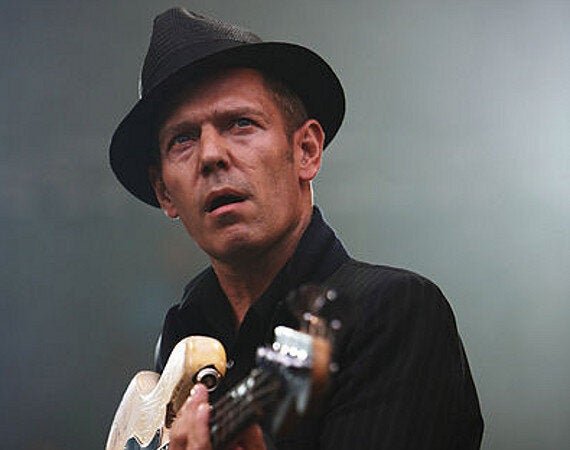Perhaps, like his musical contemporary Horace Panter, it's a bass guitar thing that has afforded him a chance to think about what else he can do creatively.
Or maybe being a visual artist is just another side of what it is to be a musician. This is one for Oliver Sacks to fully explain, should he ever feel the need. But whatever it is, Paul Simonon - stalwart bassist of The Clash - is part of a stellar roll call of musicians who have all discovered keener, more fluid artistic expression in the picking up of a paint brush.

From John Lennon, Jerry Garcia, Cat Stevens, David Bowie, Freddie Mercury, Ronnie Wood and Joni Mitchell to Devendra Banhart, Ryan Adams and Lewis Wharton of Little Barrie, musicians have long been revealing their hidden depths of talent when others have been too quick to reveal hidden shallows.
Paul Simonon's exhibition Wot No Bike at London's ICA reveals a new series of oils on canvas depicting the paraphernalia of his own life as musician, artist and, like Little Barrie's Wharton, biker. This collection might be too easily attributed to the pop art form were it not for a fineness of touch and brush stroke and careful consideration of light.
Simonon's canvases depict helmets, goggles, packets of Gitanes and Embassy lying discarded on table tops beside Bic lighters and leather biker jackets draped over the back of chairs. There are ashtrays and poker dice, a bass guitar (his weapon of choice), ignition keys and leather gloves, dog tags, a pair of stilletos and a Penguin paperback replete with classic jacket design placed next to a burning cigarette that balances on a table's edge. One canvas entitled Craigie's Chair (2014) depicts a red leather armchair upon which has been left a black leather jacket and, standing beside it, a pair of polished biker boots. In and of itself, this still life might have been imbued with a deadness by a lesser talent had not Simonon's palette and stroke evoked his own gloomy pride in the life he has led and the life he still wishes for himself.
These are scenes from Simonon's life, an inventory of himself. He has dissembled himself by painting his possessions and totems; the collection has the feel of crime scenes crossed with the warmth of the hearth. It's a life we can see more clearly via the vehicles he paints (a Vespa and a Bonneville) than if he had rendered a self portrait of the working class, intellectually inclined artist that he is.
On show is his life atomised and laid out as working components of his id, a truer reflection of who he is that no number of gigs as bassist for The Clash could ever manage to reveal.
"The room that my dad used to paint in is where I slept," he says in the short film Baillie Walsh has made of his life today as an artist. "So every time I woke up, I was surrounded by art."
Immersion is the word. He knew of nothing else it would seem until music came along. It's the sort of fate to which one cannot attach a value or even adequately describe. Call it the gift, the blue touch paper that leads to the muse.
Having attended Byam Shaw School of Art, he says he found "an outlet... which is a fortunate thing to have". Simonon learned his art the old way, as did Lennon, Ray Davies, Strummer and Townshend, via an art school route which helped to expand, rather than to box and confine minds. Today, it might be argued, it is more important for a young artist to embrace cynicism and commercialism; ideas and freedom of expression counted once upon a time, whereas today, perhaps, business models count for more.
But Simonon's work echoes the 'kitchen sink' school of painters of 1950s post-war Britain, the depictions of the banal and the ordinary helping one focus on the angst of post-war austerity. And there's that word again, one that has been made to figure large in our current times. Simonon has, therefore, achieved a double-edged sense of relevancy through his music and art.
Having stayed true to his art, and in by doing so, to himself, to his tastes and the changing characteristics of who he is as he has aged, we see in this exhibition the autobiography of a man whose message surprises because its power arrives with subtlety and quietude at a time, lest we need reminding, when everyone else is shouting to be heard.
For more information on Paul, click here
Photo by Rama
